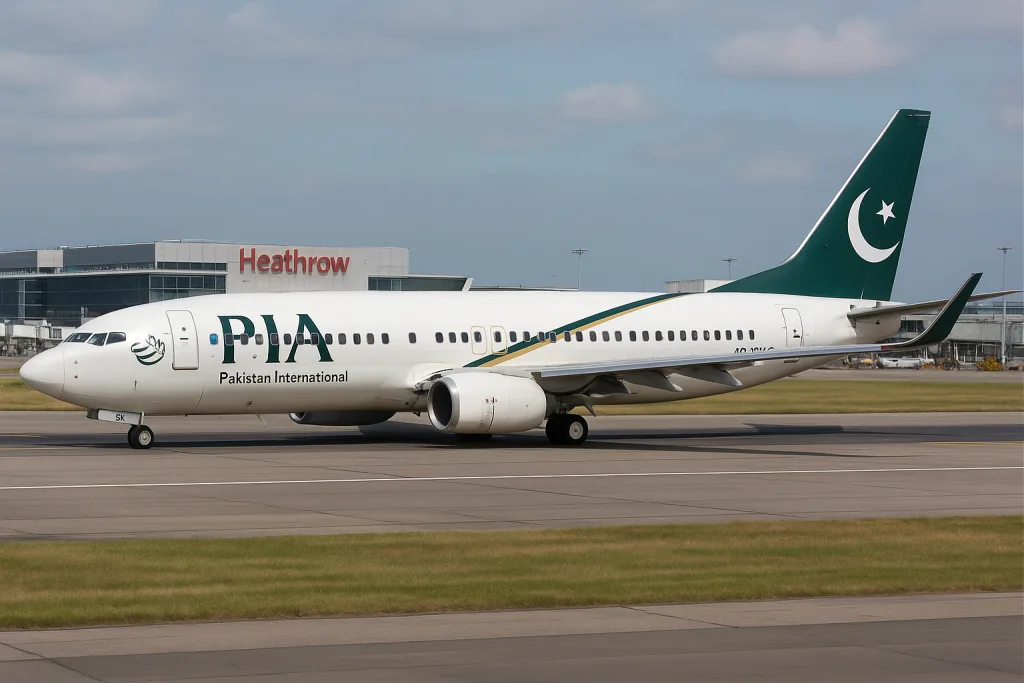
UK Removes Pakistan from Air Safety List — Flights Could Soon Resume
A major shift has taken place in international aviation. The United Kingdom has officially removed Pakistan from its Air Safety List. This update now allows Pakistani airlines to apply for flight operations to the UK. The long-anticipated move is a step forward in restoring full air connectivity between the two countries.
Flights will not resume immediately. However, Pakistani airlines can now apply for permits from the UK Civil Aviation Authority (CAA), which manages operational clearances.
Background: Why Was Pakistan Listed in the First Place?
In 2021, the UK added Pakistan to its Air Safety List due to concerns about aviation oversight and reliability. This action effectively banned Pakistani carriers from flying directly to the UK.
The decision followed a detailed technical safety review. That review revealed systemic weaknesses in Pakistan’s aviation system. In response, the European Union Aviation Safety Agency (EASA) also suspended Pakistani-operated flights.
What Has Changed Since Then?
Following the suspension, Pakistan’s Civil Aviation Authority (PCAA) launched major safety upgrades. Many changes came from years of collaboration with British aviation experts.
The UK’s Air Safety Committee audited Pakistan’s progress. After several independent safety evaluations, the committee confirmed that Pakistan now meets global aviation safety standards. These reforms were made possible by consistent efforts, training, and systemic upgrades.
The British High Commissioner to Pakistan, Jane Marriott, acknowledged this success:
“I’m grateful to aviation experts in the UK and Pakistan for their collaborative work to drive improvements to meet international safety standards. While it will take time for flights to resume, once the logistics are in place, I look forward to using a Pakistani carrier when visiting family and friends.”
How Will Flights Resume?
Lifting the ban does not automatically restart operations. Each Pakistani airline must go through an individual application process with the UK Civil Aviation Authority.
The process includes:
- Submitting updated safety documentation
- Demonstrating compliance with international aviation protocols
- Completing operational audits if requested
After approval, airlines may resume operations. This timeline will depend on each airline’s readiness and application speed.
Impact on Travelers and Trade
This decision will benefit over 1.6 million British citizens of Pakistani heritage. They frequently travel for family, business, or personal reasons. Thousands of British nationals based in Pakistan will also enjoy more direct and potentially lower-cost flights.
Improved flight access may boost UK–Pakistan trade, which already totals around £4.7 billion. The UK is Pakistan’s third-largest trading partner. Better connectivity could increase business travel, cargo flow, and logistics efficiency.
Reactions Across the Aviation Sector
Aviation experts across both nations welcomed the news. While some caution that it’s only a beginning, many believe this move restores confidence in Pakistan’s aviation system.
A Pakistan Civil Aviation Authority spokesperson stated:
“We appreciate the trust shown by UK regulators. We are committed to maintaining and improving our safety standards—not just to meet global requirements, but for the safety of our own citizens.”
What’s Next for Pakistani Airlines?
Pakistan International Airlines (PIA) is expected to apply first. Before the suspension, PIA operated flights to London, Birmingham, and Manchester. These routes may return soon, based on slot availability and passenger demand.
Other private carriers, like Airblue may follow. Their entry could offer travelers more competitive fare options.
Final Thoughts
Restoring air safety status with the UK reflects years of work by Pakistan’s aviation authorities. While full operations may take time, this change opens the skies for smoother and safer air travel.
The decision highlights technical improvement over politics. For travelers and businesses, it signals a new phase of opportunity and renewed confidence in Pakistan’s aviation future.
